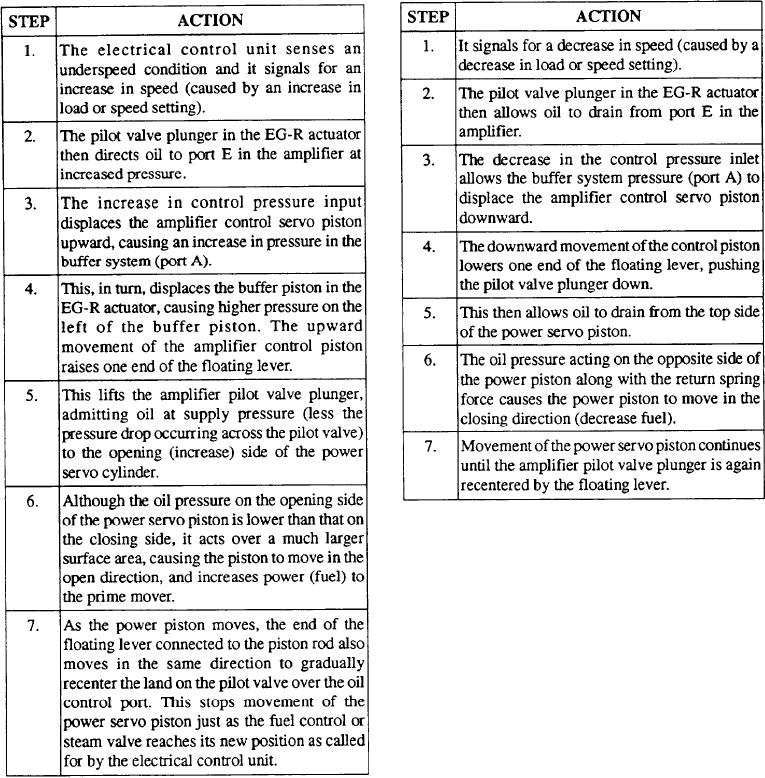
the electric control (hydraulic actuator) or load on the
pilot valve plunger. This controls the flow of oil to or
prime mover.
from the power servo cylinder and piston.
The following will occur when the electrical control
The following will occur when the electrical control
unit senses an overspeed condition:
unit senses an underspeed condition:
In some applications the steam valve or fuel control
must be opened before starting the prime mover. If this
is necessary, you must use a three-way valve, a starting
valve, and a yield spring. The yield spring and starting
valve are an integral part of the hydraulic amplifier. The
three-way valve is an external component. An
additional tube connection must also be made on the
hydraulic amplifier. This provides a passage for starting
oil (which is developed from a hand pump or an
electric-driven oil pump) to move the hydraulic
amplifier pilot valve plunger on startup. This
connection allows oil (25 psi minimum) to be used to
raise the hydraulic amplifier's pilot valve plunger and
direct starting oil to the power servo piston. This is
During an on-speed condition, the control signal to
necessary since the EG-R hydraulic actuator is
port E is maintained at a given pressure and the amplifier
inoperative on initial startup. The yield spring permits
pilot valve plunger is held in its centered position. This
one end of the floating lever to move upward when
covers the oil control port. With flow of oil to the
stinting oil is applied to the bottom side of the pilot valve
opening side of the power servo piston blocked, except
plunger. You must turn the three-way valve to drain
after starting. Otherwise, oil will be trapped under the
to compensate for leakage, the power piston will
pilot valve plunger and render the amplifier inoperative.
maintain its position in relation to the speed setting of
9-9

